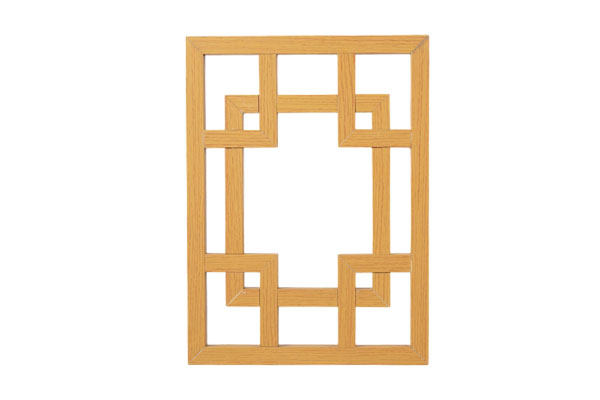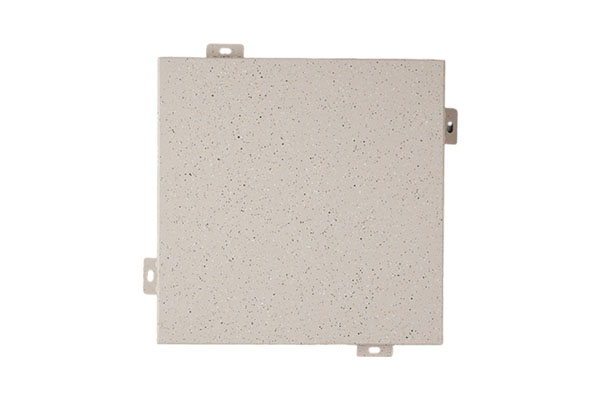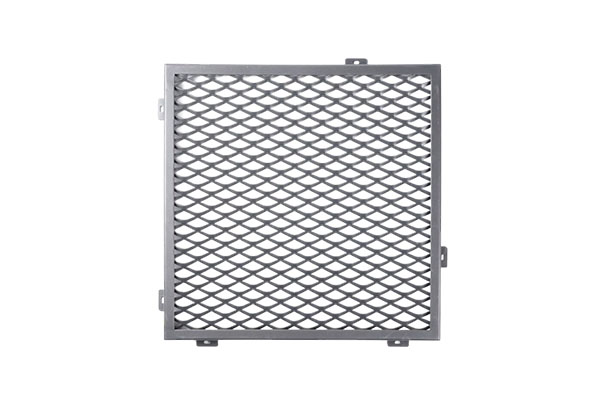What are the unique shapes and textures of Aluminum Ceiling?
Release Time : 2024-09-12
Aluminum Ceiling is becoming more and more popular in modern architecture and interior design due to its unique shape and texture.
1. Unique shape
Diverse designs: Aluminum Ceiling can achieve various design forms through various processing techniques, including flat, curved, corrugated, geometric patterns, etc. Its flexible shape design can meet the needs of different spaces and styles, bringing a sense of visual richness.
Modular design: Aluminum Ceiling often adopts modular design, which can combine multiple aluminum plates into different shapes and patterns. This design makes installation and replacement more convenient, and also allows designers to make creative designs to achieve unique ceiling effects.
Splicing and embedding: The splicing methods of Aluminum Ceiling can be very flexible, including snap-on, magnetic, etc. Through these technologies, seamless splicing or embedded design with other decorative materials can be achieved to create rich visual effects.
Three-dimensional effect: The bending and cutting technology of Aluminum Ceiling can achieve three-dimensional effects, such as raised geometric shapes or embedded light troughs, making the ceiling more layered and dynamic visually.
2. Texture and material
High gloss and matte: The surface treatment of Aluminum Ceiling can choose high gloss, matte or other special effects. High gloss surface can increase the brightness and modernity of the space, while matte surface brings a softer and more elegant visual effect.
Metal texture: Aluminum Ceiling has a metallic texture, giving people a modern and refined feeling. The texture and gloss of aluminum make the ceiling look more upscale and technological.
Texture and coating: Aluminum Ceiling can be processed by different coatings and textures, such as spraying, wood grain veneer, etc., to simulate the appearance of other materials, such as wood, stone, etc., combined with the lightness and durability of aluminum, to achieve both texture and practical effects.
Corrosion resistance and wear resistance: Aluminum Ceiling has excellent corrosion resistance and wear resistance. After anodizing or other surface treatment processes, it can effectively prevent oxidation and corrosion and maintain the appearance texture for a long time.
3. Functionality and aesthetics
Sound insulation and sound absorption: Some aluminum ceiling designs include sound insulation or sound absorption functions, which is particularly important for spaces that need to control noise (such as conference rooms and theaters). Specific structural design and material processing can effectively improve the indoor acoustic environment.
Heat dissipation and ventilation: Aluminum Ceiling can help dissipate heat to a certain extent due to its good thermal conductivity. In some designs, ventilation functions can also be integrated to improve air circulation in the space.
Lighting effect: Aluminum Ceiling can be combined with light sources such as LED lamps to optimize lighting effects. By integrating designs such as light troughs and light strips, a soft light effect can be created to enhance the atmosphere of the space.
4. Environmental adaptability
Fire resistance: Aluminum Ceiling has good fire resistance, and aluminum does not burn, which can improve the safety of buildings. In some places that require special fire protection requirements, Aluminum Ceiling is an ideal choice.
Moisture resistance: Aluminum Ceiling performs well in humid environments and is not easily deformed or moldy. It is suitable for wet areas such as kitchens and bathrooms.
Environmental protection: Aluminum Ceiling is recyclable and meets environmental protection requirements. The materials and processes used in its production process also pay more and more attention to environmental protection and sustainable use of resources.
5. Application areas
Commercial space: In commercial spaces such as shopping malls, hotels, offices and other places, the unique shape and high-end texture of Aluminum Ceiling can enhance the visual effect and overall grade of the space.
Residential decoration: In modern residences, the design of Aluminum Ceiling can be coordinated with the home style, increase the beauty of the space, and meet functional requirements, such as hiding lamps and improving acoustic effects.
Public facilities: In public facilities such as airports, stations, and hospitals, the durability and easy cleaning of Aluminum Ceiling make it an ideal choice. At the same time, it can also improve the comfort and visual effects of public spaces through design.
Aluminum Ceiling has become an important element in modern architecture and interior design due to its unique design, diverse textures and excellent functional performance. It not only provides beautiful visual effects, but also has excellent durability and functionality, making it perform well in a variety of application scenarios such as commercial spaces, residential decoration and public facilities.
1. Unique shape
Diverse designs: Aluminum Ceiling can achieve various design forms through various processing techniques, including flat, curved, corrugated, geometric patterns, etc. Its flexible shape design can meet the needs of different spaces and styles, bringing a sense of visual richness.
Modular design: Aluminum Ceiling often adopts modular design, which can combine multiple aluminum plates into different shapes and patterns. This design makes installation and replacement more convenient, and also allows designers to make creative designs to achieve unique ceiling effects.
Splicing and embedding: The splicing methods of Aluminum Ceiling can be very flexible, including snap-on, magnetic, etc. Through these technologies, seamless splicing or embedded design with other decorative materials can be achieved to create rich visual effects.
Three-dimensional effect: The bending and cutting technology of Aluminum Ceiling can achieve three-dimensional effects, such as raised geometric shapes or embedded light troughs, making the ceiling more layered and dynamic visually.
2. Texture and material
High gloss and matte: The surface treatment of Aluminum Ceiling can choose high gloss, matte or other special effects. High gloss surface can increase the brightness and modernity of the space, while matte surface brings a softer and more elegant visual effect.
Metal texture: Aluminum Ceiling has a metallic texture, giving people a modern and refined feeling. The texture and gloss of aluminum make the ceiling look more upscale and technological.
Texture and coating: Aluminum Ceiling can be processed by different coatings and textures, such as spraying, wood grain veneer, etc., to simulate the appearance of other materials, such as wood, stone, etc., combined with the lightness and durability of aluminum, to achieve both texture and practical effects.
Corrosion resistance and wear resistance: Aluminum Ceiling has excellent corrosion resistance and wear resistance. After anodizing or other surface treatment processes, it can effectively prevent oxidation and corrosion and maintain the appearance texture for a long time.
3. Functionality and aesthetics
Sound insulation and sound absorption: Some aluminum ceiling designs include sound insulation or sound absorption functions, which is particularly important for spaces that need to control noise (such as conference rooms and theaters). Specific structural design and material processing can effectively improve the indoor acoustic environment.
Heat dissipation and ventilation: Aluminum Ceiling can help dissipate heat to a certain extent due to its good thermal conductivity. In some designs, ventilation functions can also be integrated to improve air circulation in the space.
Lighting effect: Aluminum Ceiling can be combined with light sources such as LED lamps to optimize lighting effects. By integrating designs such as light troughs and light strips, a soft light effect can be created to enhance the atmosphere of the space.
4. Environmental adaptability
Fire resistance: Aluminum Ceiling has good fire resistance, and aluminum does not burn, which can improve the safety of buildings. In some places that require special fire protection requirements, Aluminum Ceiling is an ideal choice.
Moisture resistance: Aluminum Ceiling performs well in humid environments and is not easily deformed or moldy. It is suitable for wet areas such as kitchens and bathrooms.
Environmental protection: Aluminum Ceiling is recyclable and meets environmental protection requirements. The materials and processes used in its production process also pay more and more attention to environmental protection and sustainable use of resources.
5. Application areas
Commercial space: In commercial spaces such as shopping malls, hotels, offices and other places, the unique shape and high-end texture of Aluminum Ceiling can enhance the visual effect and overall grade of the space.
Residential decoration: In modern residences, the design of Aluminum Ceiling can be coordinated with the home style, increase the beauty of the space, and meet functional requirements, such as hiding lamps and improving acoustic effects.
Public facilities: In public facilities such as airports, stations, and hospitals, the durability and easy cleaning of Aluminum Ceiling make it an ideal choice. At the same time, it can also improve the comfort and visual effects of public spaces through design.
Aluminum Ceiling has become an important element in modern architecture and interior design due to its unique design, diverse textures and excellent functional performance. It not only provides beautiful visual effects, but also has excellent durability and functionality, making it perform well in a variety of application scenarios such as commercial spaces, residential decoration and public facilities.







